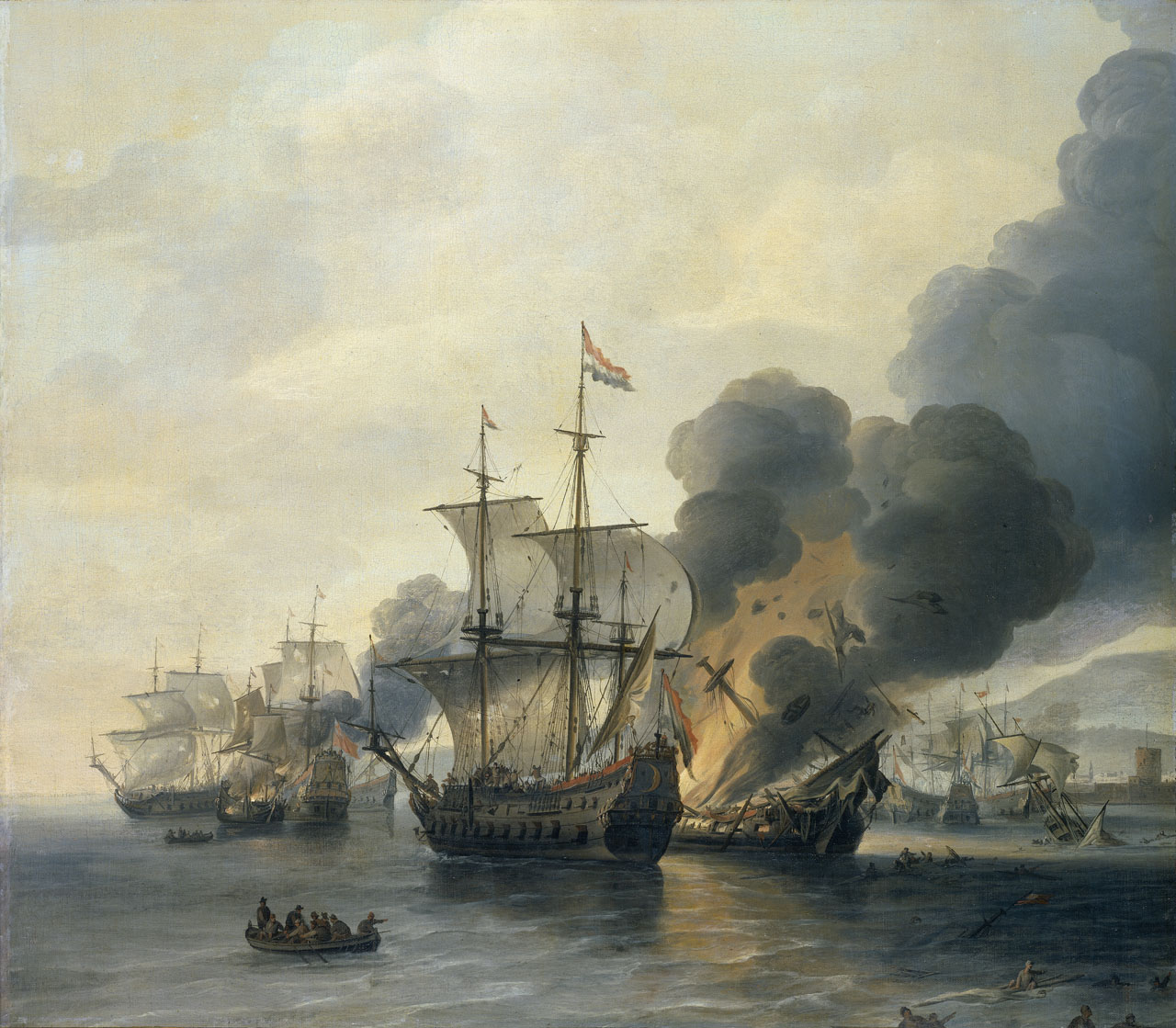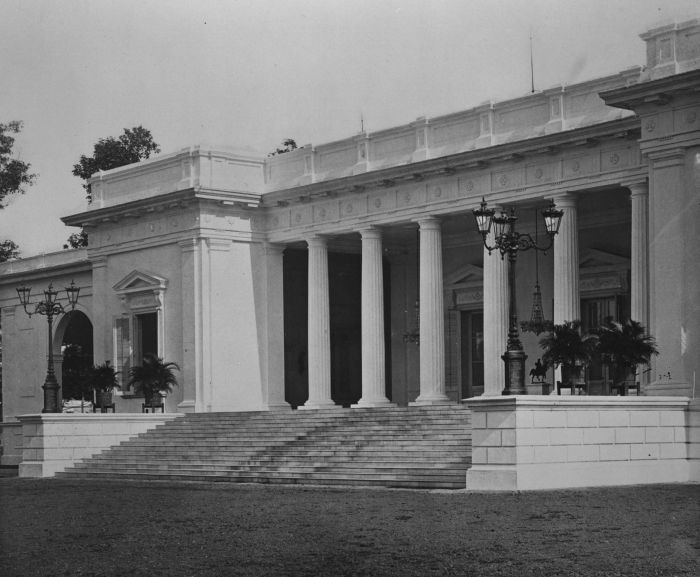|
Gouden Leeuw
The ''Gouden Leeuw'' ( nl, Golden Lion) was a Dutch ship of the line armed with 80-82 cannon. The ship was built for the Admiralty of Amsterdam in 1666 during the Second Anglo-Dutch War. The ''Gouden Leeuw'' was for a time the largest Dutch warship. During the Third Anglo-Dutch War, the ship served as the flagship of Lieutenant Admiral Cornelis Tromp. She was Tromp's flagship at the Battle of Texel in 1673, with the Irishman Thomas Tobiasz as his flag captain. She was broken up in 1686. The name ''Gouden Leeuw'' was available, as a previous Dutch ship with the same name had been wrecked on the coral reefs of Liuqiu Island, then known to the Dutch as Lamay, in 1622. The crewmembers were killed by the native inhabitants of the island, which ultimately led to a planned massacre and depopulation in 1636, sanctioned by the Dutch East Indies' colonial government. The ''Gouden Leeuw'' was, in English feet, about 165 ft long by about wide by approximately deep, and was armed ... [...More Info...] [...Related Items...] OR: [Wikipedia] [Google] [Baidu] |
Willem Van De Velde The Elder
Willem van de Velde the Elder (1610/11 – 13 December 1693) was a Dutch Golden Age seascape painter, who produced many precise drawings of ships and ink paintings of fleets, but later learned to use oil paints like his son. Biography Willem van de Velde, known as the Elder, a marine draughtsman and painter, was born in Leiden, the son of a Flemish skipper, Willem Willemsz. van de Velde, and is commonly said to have been bred to the sea. He married Judith Adriaens van Leeuwen in Leiden in 1631. His three known legitimate children were named Magdalena, born 1632; Willem, known as the Younger, also a marine painter, born 1633 in Leiden; and Adriaen, a landscape painter, baptized in 1636 in Amsterdam. Meanwhile the family lived Korte Koningstraat, close to the harbour, an area known as the Lastage. His marriage was stormy, at least in its later years. David Cordingly relates that Willem the Elder fathered two children out of wedlock in 1653, one “by his maidservant, ... [...More Info...] [...Related Items...] OR: [Wikipedia] [Google] [Baidu] |
Cornelis Tromp
Cornelis Maartenszoon Tromp, ''Count of Sølvesborg'' (3 September 1629 – 29 May 1691) was a Dutch naval officer who served as lieutenant-admiral general in the Dutch Navy, and briefly as a general admiral in the Royal Danish Navy. Tromp fought in the Anglo-Dutch Wars and the Scanian War. His father was Lieutenant Admiral Maarten Tromp. Biography Early life Cornelis Maartenszoon Tromp was born on 9 September 1629, in Rotterdam, in the historically dominant county of Holland. He was the second son of Maarten Tromp and Dina Cornelisdochter de Haas. His name Maartenszoon, sometimes abbreviated to Maartensz, is a patronymic. He had two full brothers, Harper and Johan.Tromp, Cornelis in ''Nieuw Nederlandsch biografisch woordenboek. Deel 5''. Retrieved 5 May 2009. In 1633, when he was only four ye ... [...More Info...] [...Related Items...] OR: [Wikipedia] [Google] [Baidu] |
Willem Van De Velde The Younger
Willem van de Velde the Younger (18 December 1633 (baptised)6 April 1707) was a Dutch Republic, Dutch marine painter, the son of Willem van de Velde the Elder, who also specialised in maritime art. His brother, Adriaen van de Velde, was a landscape painter. Biography Willem van de Velde was baptised on 18 December 1633 in Leiden, Holland, Dutch Republic. He was instructed by his father, and around 1650 by Simon de Vlieger, a marine painter of repute at the time, who worked around Weesp. He was also influenced by the work of the Dutch artist Jan van de Cappelle, who excelled at painting cloudy skies, the clouds often being reflected in the calm waters. Willem was married twice, in 1652 with Petronella Le Maire coming from Weesp, but divorced. At that time he lived at Prins Hendrikkade, Buitenkant and likely with a view on the harbour and the Amsterdam Admiralty; from 1655 one of his neighbors was Michiel de Ruyter. In 1656 he married Magdalena Walravens, the daughter of a skippe ... [...More Info...] [...Related Items...] OR: [Wikipedia] [Google] [Baidu] |
Governor-General Of The Dutch East Indies
The governor-general of the Dutch East Indies ( nl, gouverneur-generaal van Nederlands Indië) represented Dutch rule in the Dutch East Indies between 1610 and Dutch recognition of the independence of Indonesia in 1949. Occupied by Japanese forces between 1942 and 1945, followed by the Indonesian National Revolution until 1949. Indonesia proclaimed its independence on 17 August 1945. History The first governors-general were appointed by the Dutch East India Company (VOC). After the VOC was formally dissolved in 1800, the territorial possessions of the VOC were nationalised under the Dutch government as the Dutch East Indies, a colony of the Netherlands. Governors-general were now appointed by either the Dutch monarch or the Dutch government. During the Dutch East Indies era most governors-general were expatriate Dutchmen, while during the earlier VOC era most governors-general became settlers who stayed and died in the East Indies. Under the period of British control (1811 ... [...More Info...] [...Related Items...] OR: [Wikipedia] [Google] [Baidu] |
Dutch East Indies
The Dutch East Indies, also known as the Netherlands East Indies ( nl, Nederlands(ch)-Indië; ), was a Dutch colony consisting of what is now Indonesia. It was formed from the nationalised trading posts of the Dutch East India Company, which came under the administration of the Dutch government in 1800. During the 19th century, the Dutch possessions and hegemony expanded, reaching the greatest territorial extent in the early 20th century. The Dutch East Indies was one of the most valuable colonies under European rule, and contributed to Dutch global prominence in spice and cash crop trade in the 19th to early 20th centuries. The colonial social order was based on rigid racial and social structures with a Dutch elite living separate from but linked to their native subjects. The term ''Indonesia'' came into use for the geographical location after 1880. In the early 20th century, local intellectuals began developing the concept of Indonesia as a nation state, and set the stage ... [...More Info...] [...Related Items...] OR: [Wikipedia] [Google] [Baidu] |
Lamey Island Massacre
The Lamey or Liuqiu Island Massacre was the slaughter of aboriginal inhabitants of Liuqiu Island (then known as "Lamey" or "Golden Lion Island") off the coast of Taiwan by Dutch soldiers in 1636. The killings were part of a punitive campaign in retaliation for the massacre of shipwrecked Dutch sailors in two separate incidents in 1622 and 1631 by natives of the island. Background Two years before the Dutch East India Company established a presence on Taiwan in 1624, a Dutch ship named the ''Golden Lion'' (Dutch:') was wrecked on the coral reefs of Liuqiu Island. The entire crew was killed by the native inhabitants. Subsequently in 1631 a yacht named the ' was also wrecked on the treacherous reefs, with survivors (numbering around fifty) battling the Lameyans for two days before being overwhelmed and slaughtered to a man. Following the murder of the ' survivors, the island was sometimes referred to by the Dutch as ' ("Golden Lion Island"). There was a desire at the very highest l ... [...More Info...] [...Related Items...] OR: [Wikipedia] [Google] [Baidu] |
Liuqiu Island
Liuqiu, also known by several other names, is a coral island in the Taiwan Strait about southwest of the main island of Taiwan. It has an area of and approximately 13,000 residents, the vast majority of whom share only 10 surnames. It is administered as a township of Pingtung County. the township chief is Chen Lung-chin. Names ''Liúqiú'' is the pinyin romanization of the Mandarin pronunciation of the Chinese name . Other romanizations include Liuchiu, Liu-chiu, and Liu-ch'iu based on the Wade-Giles system for Mandarin and Ryūkyū from its Japanese pronunciation. The original Liuqiu appears in the Book of Sui and other medieval Chinese records as an island kingdom somewhere in the East China Sea. It was written by different authors with different homophonous characters and appears to have transcribed a native name. That kingdom has been variously identified with states on Taiwan Island, Okinawa, and the Penghu Islands. The name Liuqiu Islet (, ''yǔ'') was first ... [...More Info...] [...Related Items...] OR: [Wikipedia] [Google] [Baidu] |
Flag Captain
In the Royal Navy, a flag captain was the captain of an admiral's flagship. During the 18th and 19th centuries, this ship might also have a "captain of the fleet", who would be ranked between the admiral and the "flag captain" as the ship's "First Captain", with the "flag captain" as the ship's "Second Captain". Unlike a "captain of the fleet", a flag-captain was generally a fairly junior post-captain Post-captain is an obsolete alternative form of the rank of Captain (Royal Navy), captain in the Royal Navy. The term served to distinguish those who were captains by rank from: * Officers in command of a naval vessel, who were (and still are) ..., as he had the admiral to keep an eye on him, but – like a "captain of the fleet" – a "flag captain" was a post rather than a rank. References F Royal Navy {{navy-stub ... [...More Info...] [...Related Items...] OR: [Wikipedia] [Google] [Baidu] |



